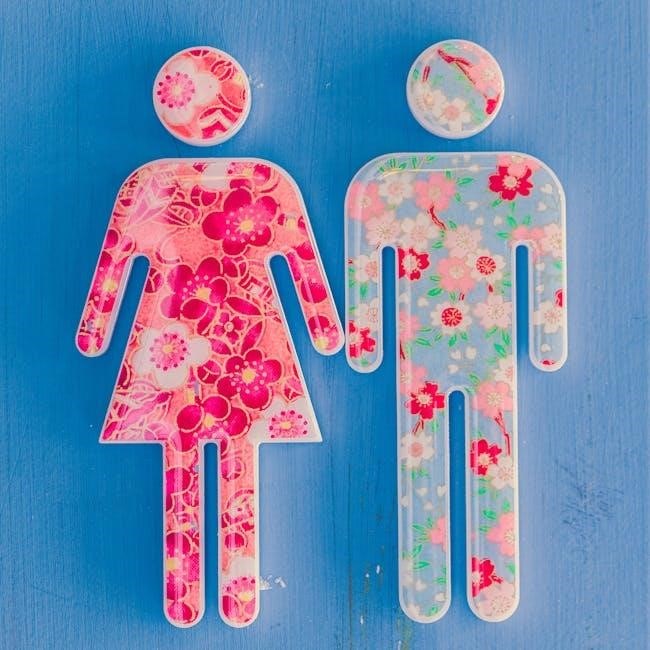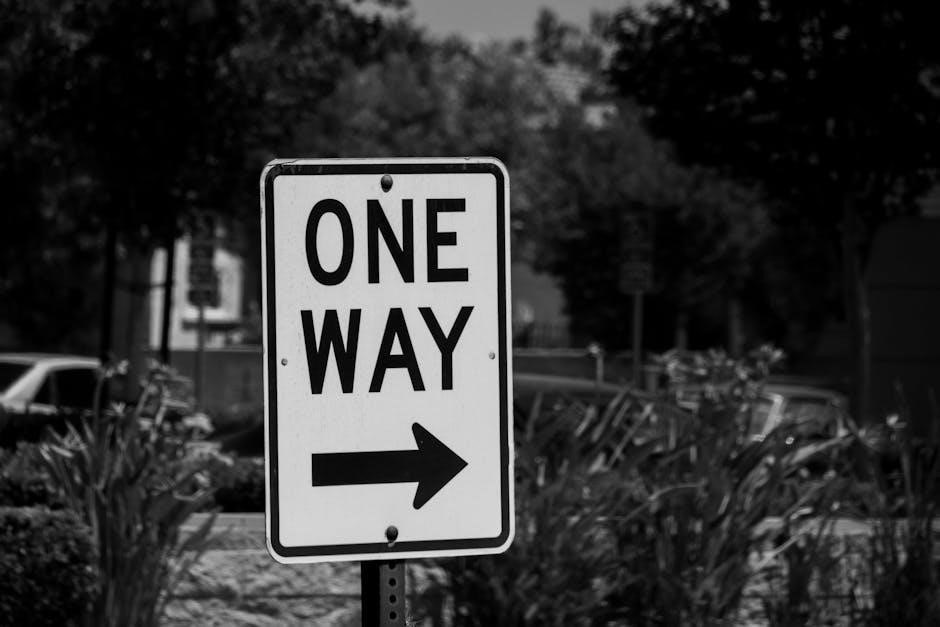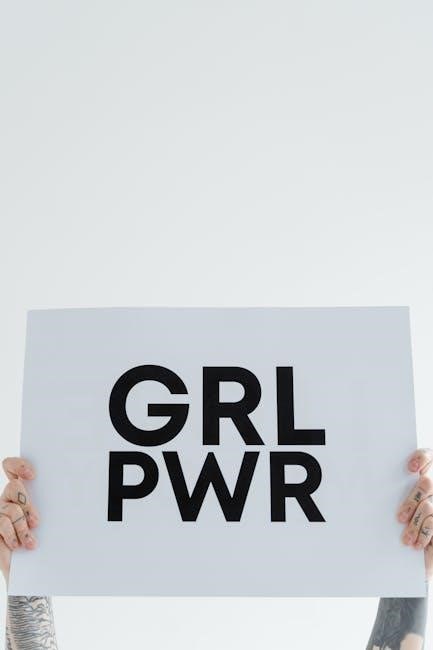This unique illustrated guide by Meg-John Barker and Jules Scheele offers an accessible exploration of gender, blending visual storytelling with insightful discussions on identity, culture, and society.
1.1 Overview of the Book
Genders: A Graphic Guide by Meg-John Barker and Jules Scheele is an engaging, visually rich exploration of gender, covering its history, biology, and cultural significance. The book navigates complex concepts like non-binary identities, gender norms, and intersectionality in an accessible way. Through illustrations and concise text, it challenges binary thinking and explores how gender shapes relationships and societal structures. This guide serves as both an educational tool and a thought-provoking resource for understanding gender in all its diversity.
1.2 The Collaboration Between Meg-John Barker and Jules Scheele
Meg-John Barker, a renowned author on gender and sexuality, and illustrator Jules Scheele, combine their expertise to create an engaging and accessible guide. Their collaboration blends academic insight with visual storytelling, making complex concepts approachable. Building on their previous success with Queer: A Graphic History, this partnership ensures Genders: A Graphic Guide is both informative and visually compelling, offering a unique learning experience for readers exploring gender identity and its societal implications.
1.3 The Unique Approach of the Graphic Guide
Genders: A Graphic Guide stands out for its innovative use of visuals and concise storytelling. By blending art and education, it simplifies complex gender concepts, making them relatable and engaging. The guide’s unique approach lies in its ability to break down theoretical discussions into digestible, visually appealing content, ensuring accessibility for a broad audience. This method not only educates but also encourages reflection on gender identity, culture, and societal norms in a way that resonates with readers of all backgrounds.
Understanding Gender
Gender is a complex concept shaped by biology, culture, and identity. This section explores its definitions, societal roles, and the interplay between sex and gender, offering clear explanations.
2.1 Definitions and Concepts of Gender
Genders are complex and multifaceted, extending beyond biological sex. Gender identity refers to an individual’s internal sense of self, while gender expression encompasses how gender is outwardly displayed. Culture and society shape these concepts, often imposing norms that define masculinity and femininity. Gender exists on a spectrum, not a binary, and its definitions vary across cultures and historical periods. Understanding these concepts is crucial for addressing identity, equality, and the diverse experiences of individuals worldwide.
2.2 The Difference Between Sex and Gender
Sex typically refers to biological differences, such as chromosomes, anatomy, and hormones, often categorized as male or female. Gender, however, is a social and cultural construct encompassing identities, roles, and expressions. While sex is often viewed as binary, gender exists on a spectrum and varies across cultures. This distinction highlights how biological traits differ from societal expectations and individual identities, emphasizing the complexity of gender beyond mere biological classification.
2.3 The Role of Biology and Culture in Shaping Gender
Biology influences gender through chromosomes, hormones, and anatomy, but culture significantly shapes gender roles and identities. Societal norms, expectations, and power structures often dictate how individuals express masculinity or femininity. While biology provides a foundation, culture molds how gender is perceived and lived, highlighting the interplay between innate traits and external influences in forming gender identity and expression.

Historical and Cultural Perspectives on Gender
This section explores how gender roles and identities have evolved across time and cultures, highlighting diverse perspectives and the impact of societal norms on gender expression.
3.1 The Evolution of Gender Roles Across Time
The evolution of gender roles reveals a dynamic journey through shifting societal structures and cultural norms. From patriarchal societies to more inclusive frameworks, gender roles have transformed significantly. Historical perspectives show how gender identities and expectations were shaped by power dynamics, religion, and economics; The graphic guide highlights the transition from rigid binary systems to contemporary understandings of non-binary and trans identities. This exploration underscores how historical norms continue to influence modern gender discussions and societal progress.
3.2 Gender Diversity in Different Cultures
Cultures worldwide exhibit diverse understandings of gender, challenging rigid binary frameworks. Indigenous societies, such as Native American two-spirit identities, recognize non-binary roles. Similarly, South Asia’s hijra community and Thailand’s third-gender recognition highlight varied gender expressions. These examples illustrate how cultural contexts shape gender identities, offering alternatives to Western binary norms. The graphic guide explores these global perspectives, emphasizing the richness of gender diversity and its significance in fostering inclusivity and understanding across cultures.
3.3 The Impact of Colonialism on Gender Norms
Colonialism profoundly disrupted indigenous gender systems, imposing rigid Western binary frameworks. Many colonized cultures had fluid gender identities, which were suppressed by colonial powers. This imposition often erased non-binary and third-gender roles, enforcing heteronormative norms. The legacy of colonialism continues to affect gender diversity, contributing to ongoing discrimination and marginalization of gender-diverse individuals. The graphic guide highlights how these historical injustices shape contemporary gender inequalities and the importance of decolonizing gender understandings to promote inclusivity and justice.

Gender Norms and Stereotypes
Gender norms and stereotypes are societal expectations dictating behavior based on gender, often limiting personal expression and reinforcing inequality, disproportionately affecting marginalized communities.
4.1 The Role of Gender Norms in Society
Gender norms shape societal expectations, influencing behavior, opportunities, and health outcomes. They often restrict personal expression and reinforce inequality, disproportionately affecting marginalized groups. These norms are deeply ingrained, impacting access to resources, healthcare, and social participation. Challenging them is crucial for promoting equality and empowering individuals to break free from limiting stereotypes. Understanding their role helps address systemic barriers and fosters inclusive environments where diverse identities can thrive.
4.2 The Influence of Media on Gender Stereotypes
Media plays a significant role in shaping gender stereotypes by reinforcing traditional roles and representations. Through portrayals in TV, films, and advertising, gendered narratives often perpetuate unrealistic expectations, limiting self-expression. These depictions influence societal perceptions, affecting how individuals view themselves and others. The lack of diverse representation further marginalizes non-conforming identities. However, media can also challenge stereotypes by promoting inclusive stories, fostering empathy, and encouraging critical thinking about gender norms and their impact on individuals and society.
4.3 The Consequences of Challenging Gender Norms
Challenging gender norms can lead to discrimination, violence, and social exclusion, particularly for marginalized groups. Individuals may face mental health challenges, such as anxiety and isolation, due to societal resistance. However, questioning these norms also fosters personal growth, empowerment, and societal progress. By addressing inequalities and promoting inclusivity, challenging gender norms becomes a crucial step toward achieving gender equality and creating a more accepting and diverse world for all individuals, regardless of their gender identity or expression.

Intersectionality and Gender
Intersectionality examines how race, class, sexuality, and disability intersect with gender, shaping unique experiences of oppression and privilege, essential for understanding inequality and promoting inclusivity.
5.1 What is Intersectionality?
Intersectionality is a critical framework that examines how overlapping social identities, such as race, class, sexuality, and disability, intersect with gender to produce unique experiences of oppression and privilege. Developed by Kimberlé Crenshaw, it highlights how systemic inequalities intersect, creating distinct challenges for individuals with multiple marginalized identities. This concept emphasizes that gender cannot be understood in isolation, as it is shaped by other social and cultural factors, influencing access to resources, opportunities, and experiences of discrimination.
5.2 How Intersectionality Affects Gender Experiences
Intersectionality shapes gender experiences by revealing how race, class, sexuality, and other identities interact with gender, creating unique challenges and privileges. For example, a queer woman of color may face discrimination based on both her gender and race, compounding her marginalization. This framework highlights how societal structures, such as economic inequality and systemic racism, influence gender norms and access to resources, emphasizing the need to address multiple forms of oppression simultaneously to achieve true gender equality and justice.
5.3 The Importance of Intersectionality in Gender Equality
Intersectionality is crucial for achieving gender equality, as it acknowledges how race, class, sexuality, and other identities intersect with gender, creating unique experiences of oppression. By addressing these overlapping biases, policies and initiatives can become more inclusive, ensuring no group is left behind. This approach fosters unity across social justice movements and highlights the need to dismantle systemic inequalities collectively. It emphasizes the importance of equitable access to resources and opportunities for all, regardless of their intersecting identities, paving the way for true gender equality and justice.
The Role of Education and Activism
Education raises awareness and challenges stereotypes, while activism drives progress toward gender equality, emphasizing the importance of collaborative efforts to create lasting change in society.
6.1 The Importance of Gender Education
Gender education is crucial for breaking down stereotypes and fostering empathy. It provides foundational knowledge about identity, societal norms, and equality, enabling individuals to navigate diverse perspectives. By incorporating gender studies into curricula, schools can promote inclusivity and challenge harmful norms. This education empowers people to recognize and address gender-based biases, creating a more equitable society. It also encourages critical thinking about how gender intersects with race, class, and sexuality, highlighting the need for intersectional approaches in achieving true equality and understanding.
6.2 The Role of Activism in Promoting Gender Equality
Activism plays a vital role in challenging gender inequalities and advocating for systemic change. Grassroots movements and campaigns raise awareness about discrimination, pushing society toward inclusivity. Activists address issues like workplace disparities, healthcare access, and violence, fostering dialogue and policy reform. Their efforts amplify marginalized voices, encouraging collective action; By questioning norms and promoting intersectional approaches, activism drives progress, inspiring future generations to strive for a more equitable world where gender equality is a shared goal.
6.3 How Art and Media Can Promote Gender Awareness
Art and media are powerful tools for promoting gender awareness, offering creative ways to explore and challenge gender norms. Through visual storytelling, graphic guides like Gender: A Graphic Guide make complex concepts accessible, encouraging readers to reflect on their assumptions. Media campaigns and artistic projects amplify diverse voices, breaking stereotypes and fostering empathy. By presenting real-life experiences and inclusive narratives, art and media inspire critical thinking and cultural change, helping society move toward a more gender-equitable world.

Global Perspectives on Gender Equality
Exploring global gender equality, the guide highlights progress and challenges worldwide, emphasizing the role of culture, history, and activism in shaping gender norms and promoting inclusivity.
7.1 The Current State of Gender Equality Worldwide
Gender equality progress varies globally, with some regions advancing while others face significant challenges. The World Health Organization highlights gender-related barriers to healthcare and the need for empowering women and girls. Despite efforts, gender inequality persists, impacting health outcomes and societal roles. The 30th anniversary of the Beijing Declaration underscores slow progress, emphasizing the importance of placing women at the center of global health transformation to achieve equality and inclusive well-being worldwide.
7.2 Challenges in Achieving Global Gender Equality
Challenges in achieving global gender equality include systemic gender-based violence, limited access to healthcare, and deeply rooted societal norms. Intersectionality amplifies these issues, as factors like ethnicity, socioeconomic status, and disability intersect with gender, creating unique barriers. The World Health Organization highlights how gender inequalities in health and care work disproportionately affect women, underscoring the need for comprehensive, survivor-centered care and policy reforms to address these disparities effectively and promote inclusive gender equality worldwide.
7.3 The Future of Gender Equality and What We Can Do
The future of gender equality requires addressing systemic inequalities through education, activism, and policy reform. Promoting intersectionality ensures marginalized voices are heard. Empowering women and non-binary individuals in healthcare and leadership roles is crucial. Advocacy for inclusive gender-affirming care and challenging gender stereotypes in media can foster societal change. Collective efforts, including community engagement and global collaboration, are essential to achieve equitable health systems and gender equality for all. Everyone has a role to play in this transformative journey.
